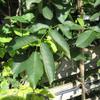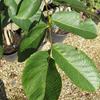Great choice! We're adding your items to the basket and working out what else you might need to plant it.
Common Walnut Juglans Regia
Example photos only. Size, stem height and habit may vary.
Please contact us for photos of current stock.
Select plant type
Quantity
British Grown – The British Grown logo denotes plants and trees that have been both propagated and grown in the UK. Read more
Product Description
JUGLANS REGIA – Common Walnut
Characteristics
Common Walnut is a large round headed tree with spreading branches grown principally for its nuts and timber. The edible nuts which are an easily storable food source have meant that this tree has been cultivated for many thousands of years. Its original natural habitat is unknown, it is however probably South Eastern Europe.
In the UK the walnut comes into leaf late in late spring or early summer, its young shoots are orange brown before eventually becoming green. It is thought to be slow growing but it grows strongly when young and can make a substantial and imposing tree over 20m (60ft) tall and 12m (40ft) wide.
The leaves are pinnate and large up to 45cm (18”) long, with a strong smell of polish when rubbed, this is said to act as a repellent to flies. The timber is also used for gunstocks.
Where to grow
Walnuts grow best on fertile soils that are deep and well drained. As the leaves are killed by frost avoid valley bottoms and any area prone to water-logging. They will not grow well in compacted soils.
Did you know?
In Greek mythology the walnut tree is the symbol of wisdom. Karya, nymph of the Walnut, is changed in a walnut tree by the god Dionysos.
Features
-
Mature Height
- Large - 15-20 metres
-
Spread
- 10-15metres
-
Shape / Habit
- Spreading
- Broad headed
-
Growth Rate
- Slow
-
Soil Type
- Clay
- Chalk/Limestone
- Light sandy
-
Sun Levels
- Full sun
-
Difficulty / Hard to Grow
- Medium
-
Evergreen / Deciduous
- Deciduous
-
Leaf Colour
- Green
-
Foliage
- Late to leaf
-
Uses
- Parkland Tree
- Garden Tree
- City/Urban Sites
- Country/Farmland
- Good Firewood
- Timber producing
- Edible Fruit/Nuts
-
Scent
- Scented Foliage
-
Season
- Summer
Aftercare
Pruning Juglans regia
Juglans regia will mature as a hardy tree, but is susceptible to frost damage when young. Frost damaged growth, including the leader, should be cut back into healthy wood. Clearing the trunk of branches should be done early in the tree’s life.
Once established, pruning is not recommended. However in some cases it is necessary; if an established stem is damaged cut it back to a point that is just above the collar.
What time of year should I prune? Late summer through to early winter. The sap rises early so pruning in late winter will result in bleeding.
For the continued healthy growth of your trees, shrubs or hedging it is vital that you follow the advice below.
Watering
The main reason that plants die within 12 months of having been planted is lack of water. It is essential throughout the spring and summer, to give a heavy enough watering to enable the water to penetrate right down to the deepest root level of the tree. In hot dry spells give the equivalent of 2 bucketfuls every three days.
Weed Control
One of the most common causes of lack of water is competition from grass. When trees are first establishing, the grass roots would be at the same level as the tree roots and are far more efficient at taking up water and thus choke the tree. It is vital that for at least 3 years after planting your tree or hedge has a circle or strip one metre wide completely free of grass.
- Mulch mats are an effective way to stop grass and weeds, although they will require a careful eye to make sure they continue to work. After clearing the ground around the tree, firmly fit the mat by tucking the edges into the soil and put a thick layer of bark mulch on top of this. Be careful not to allow the woodchip to touch the stem as it can cause rot.
- Weed killer is very effective, however it is harmful to the environment. Organic weed killers usually do not kill roots. Weed killer needs to be applied each year for the first 3 years, preferably when the tree is dormant, or just once before applying a mulch mat.
- Mowing or strimming is NOT an answer to the problem. Each time you mow, the grass will grow back more vigorously and strimming invariably leads to lacerated trunks.
Staking
If trees are not correctly secured they will rock in the planting pit. Roots not firmly in contact with the soil are unable to take up moisture and nutrients, resulting in die back or death of the tree. Check, particularly after windy weather, that stakes are still solidly in the ground keeping the base of the trunk firm. The purpose of the stakes is to anchor the roots. Flexing in the wind, higher up the trunk, is not necessarily a problem if the roots are firm.
Bellow is list of the correct system to use to secure your trees.
- 40/60, 60/80, 80/100 whips - Unless rabbit/deer problem no need to stake.
- 100/125, 125/150 1.2m Cane and Easi tie.
- 150/175 1.2m square stake and a buckle tie and spacer.
- 175/250, 6/8, 8/10 15L 1.65 Tree stake and a buckle tie and spacer.
- All larger trees. 2 x 1.65 Tree stake and cross rail with 38mm cushion spacer and 1m of 38mm strapping.
Ties
Always use our recommended tree ties or strapping. These are designed and manufactured with the correct amount of give to hold the tree firm without strangling it. They should be checked at the end of each growing season for adjustment as the trunk thickens. Non proprietary materials such as baler twine will cut into the bark and should not be used.
Protection from Animal Damage
Rabbits, deer, sheep, cattle and horses can all potentially damage trees. Ask us for advice on the most appropriate guards for your trees or hedge. Squirrels are also a terrible pest when trees get to about 20ft tall but there is no protection available.
Are the delivery costs the same no matter how many plants I order?
Yes the delivery costs stay the same no matter how many plants you have on your order. They are worked out based on your distance from our nursery and can be found here.





